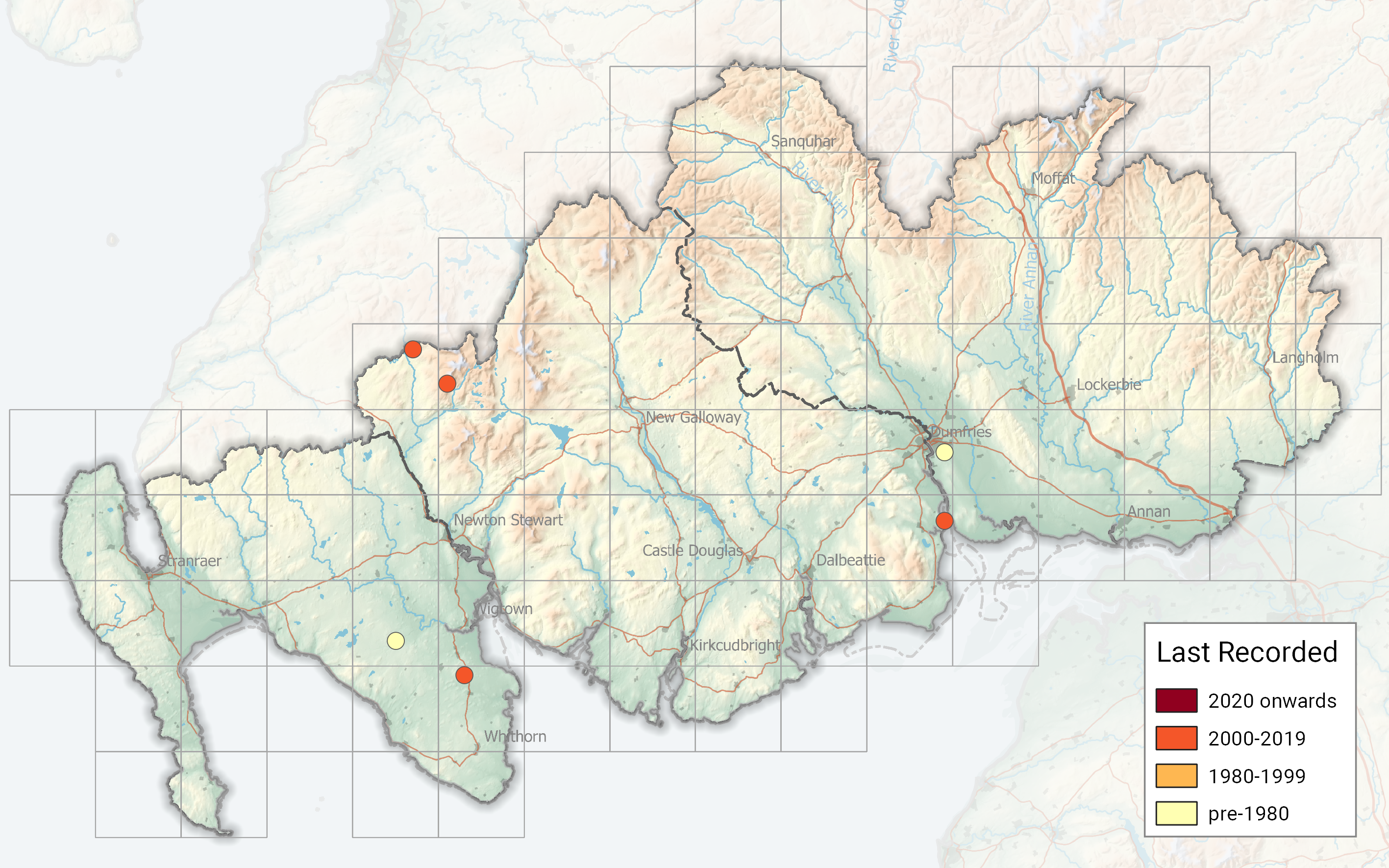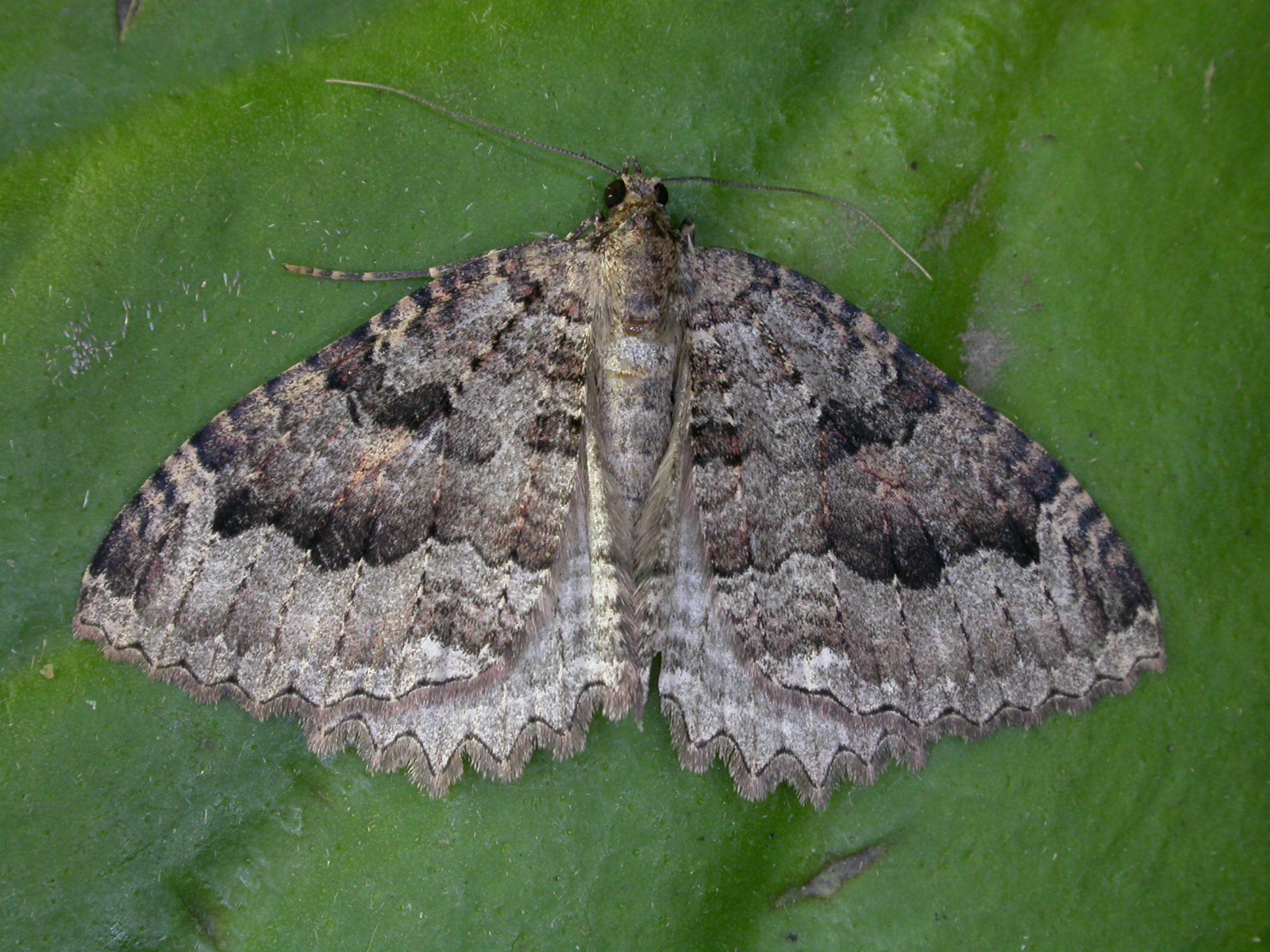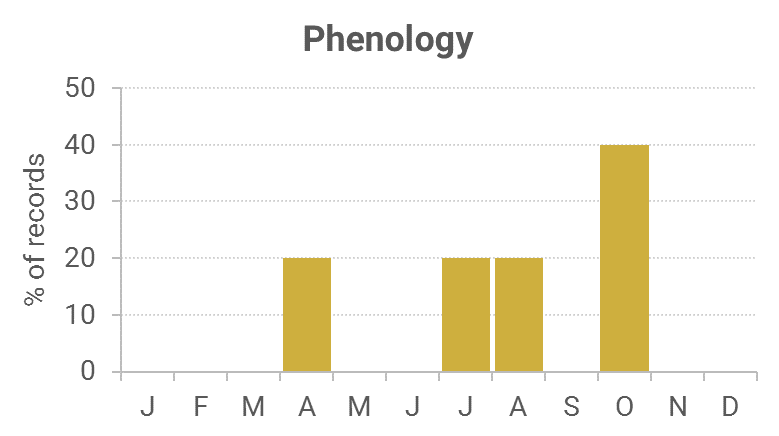See also Moth of the Week (01/11/2019)
Identification
The brownish-grey, broad and rounded forewing has a smooth and shiny appearance. Both wings have scalloped outer edges, but the one on the hindwing is edged with black. Specimen or quality photo required for record acceptance.
Recording method
Adults found hibernating in caves, mines, disused buildings, culverts etc. Comes to light in small numbers.
Life cycle
One generation. It overwinters as an adult, reappearing in April through to May. Larvae are present May to early July.
Larval foodplants
Larval foodplants are Buckthorn and Alder Buckthorn, both of which are rare in the region.
Habitat
Woodland, scrub and hedgerows.
History
First recorded for Dumfries and Galloway in 1862 for VC72 at the Crichton Institution, Dumfries by Lennon, in 1897 for VC74 at Corsemalzie by Gordon, but not until 2004 for VC73 at Merrick by Keith Naylor.




